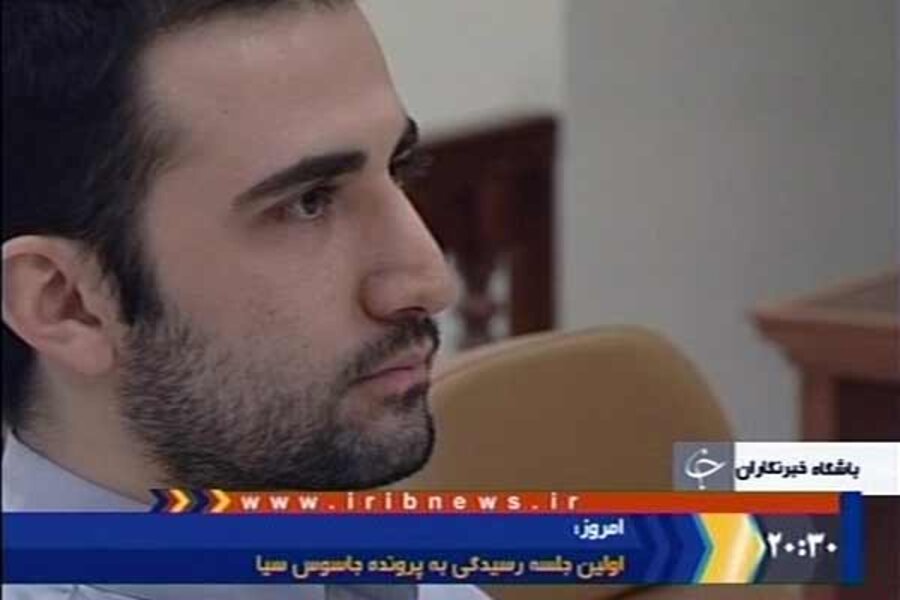Iran sentences an American to death: the history of such 'spies'
Loading...
Iran announced with great fanfare today that it had sentenced the young Iranian-American Amir Mirzaei Hekmati to death for spying. Mr. Hekmati's family said he's merely returned home to visit his grandma.
While his background (he served as a translator with the US military) suggests a return to his birthplace was unwise, giving the surging tensions between the US and Iran and the Islamic Republic's tendency to arrest Iranian-Americans – if recent history is anything to go by, Mr. Hekmati probably isn't a spy. Instead, he's just become the latest pawn in a long-running game: Iran, fueled by domestic paranoia and understandable concerns about US sabotage efforts, arrests Iranian-Americans as one of the few ways to lash out at a far more powerful foreign foe.
"Allegations that Mr. Hekmati either worked for, or was sent to Iran by the CIA are simply untrue," State Department spokeswoman Victoria Nuland wrote in a statement. "The Iranian regime has a history of falsely accusing people of being spies, of eliciting forced confessions, and of holding innocent Americans for political reasons."
Since the Iran hostage crisis of 1979 was resolved, the detention of Americans in Iran was a rarity until 2007, when a new form of hostage-taking began that was apparently designed to pressure Washington.
Hekmati would appear to be one of at least 10 US citizens arrested and held for political reasons in Iran since then, particularly at times when foreign pressure and domestic fear were on the rise – such as the summer of 2009, when the Green Movement threatened briefly to become a popular uprising that might sweep away the Islamic Revolution.
Now, with the US and Europe threatening to target Iran's oil industry and an Iranian public worried about a shaky economy and attacks from outside, Iranian-Americans headed for Tehran should tread with care. The good news is that many are eventually released. The bad news is that women and Americans without Iranian heritage appear to fare better than Iranian-American men.
For instance, the three young Americans who strayed across the Iranian border in 2009 while hiking in Iraqi Kurdistan were arrested and held on espionage charges. But the conditions of their detention were reasonable. The lone woman amongst them, Sarah Shourd, was released after a little over a year and the two men were released after a little over two years.
Iranian-American reporter Roxana Saberi was detained in January 2009 – yes, again on espionage charges – and released in May of that year. In May 2007, female Iranian-American academic Haleh Esfandiari was arrested and held on espionage charges and was released in late August of that year. Ms. Esfandiari was tied to the US-based Wilson Center think tank at the time, working on Iran democracy issues and had returned home to visit her mother. She was one of three Iranian-Americans detained that year.
One of those detainees has fared far worse. Kian Tajbaksh, another Iranian-American academic and an urban planner, was arrested in 2007. Mr. Tajbaksh was sentenced in 2009 to 12 years in prison for spying, and remains there today. Described by friends as apolitical, he had been coming and going from Iran for years on consulting jobs at the time of his arrest.
Iran claims it has strong evidence on Hekmati. Last month state television aired what it said was a confession from Hekmati, claiming he had been dispatched to Iran by the CIA to spy on its intelligence agencies.
Iran has tortured political opponents in the past, or threatened their family members with harm, in order to coerce television confessions like the one given by Hekmati. Photos of opposition cleric Mohammed Ali Abtahi before and after his 2009 detention eloquently make the case of the kind of treatment political prisoners can receive in Iran.
Hekmati's case appears to be complicated by his military ties. And the swiftness of his death sentence, when other American targets have simply been given jail time, is cause for concern. A US spy drone that either crashed in Iran or was hijacked by the country in December was evidence of the intense US espionage effort against the country's nuclear program. Fresh sanctions signed by President Obama at the end of last year targeting the country's central bank, has put both politicians and average citizens on edge about the stability of the economy.
Iran has responded as it usually does – by claiming it will disrupt global oil supplies passing through the Strait of Hormuz if it comes to war. And, perhaps in the case of Hekmati, by arresting an American.
[ Video is no longer available. ]







